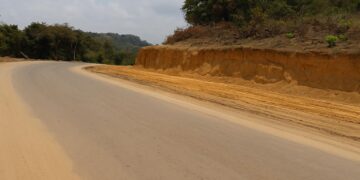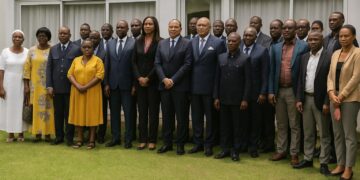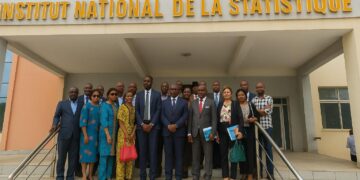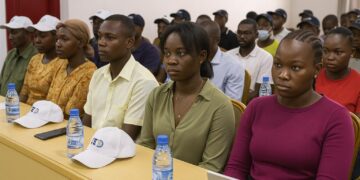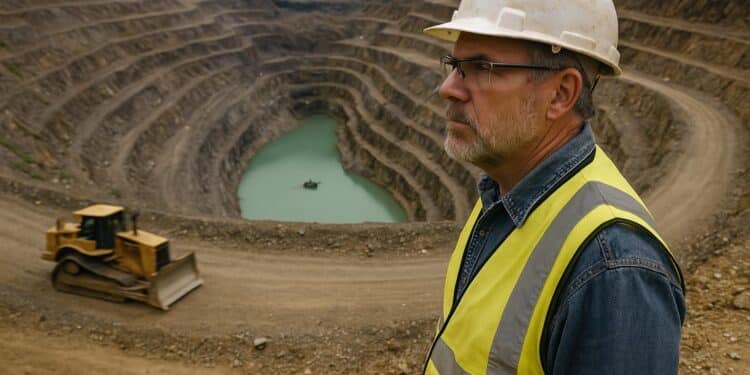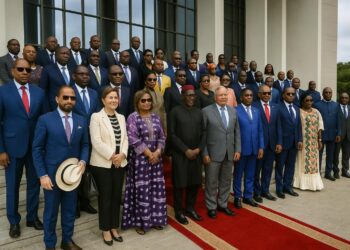Context for Mining Reforms
On 3 November 2025, the Council of Ministers in Brazzaville adopted a draft mining code that officials describe as the most sweeping rewrite of sector rules in two decades, signalling President Denis Sassou Nguesso’s intention to anchor mining growth in more transparent, sustainable foundations.
Government spokesman Thierry Moungalla told journalists the 2005 code was primarily designed to lure foreign capital through generous fiscal perks; its replacement, he argued, must keep competitiveness while aligning with global expectations on governance, local value addition and climate-related accountability.
Mining contributes below four percent of Congolese GDP despite the country’s iron, potash and polymetallic potential. Officials note that oil, which still supplies around half of budget revenues, is gradually maturing, so diversified extractive income is viewed as critical to debt sustainability and post-pandemic recovery.
Fiscal Settings and Production Sharing
The draft introduces a production-sharing mechanism inspired by hydrocarbons contracts. According to Moungalla, state equity and in-kind royalty options should “allow the republic to feel the pulse of its own subsoil.” Analysts believe predictable revenue participation can also ease sovereign risk perceptions priced into project finance.
Corporate taxation remains competitive, officials insist, yet windfall gains clauses have been tightened to capture abnormal price spikes. The government plans to warehouse 30 percent of development funds in a sequestration account at the BEAC, improving tracking while providing a liquidity buffer for social spending.
Local Content and Capital Access
A mandatory ten percent free float of Congolese mining companies on the local or regional exchange is one of the headline novelties. Policy makers argue that partial listing will democratise ownership, deepen CEMAC capital markets and create fresh savings vehicles for pension funds.
The code also reserves small-scale permits for nationals, complemented by a dedicated licence tier labelled “petite exploitation.” Government technicians expect the measure to formalise artisanal operators, raising traceability standards and expanding the taxable base without stifling community livelihoods that rely on surface deposits.
Sustainability and Governance Measures
Brazzaville places governance at the reform’s core. A digital cadastre, integrated with the Centre de Recherche Géologique et Minière, will publish concession boundaries and compliance histories. The platform, modelled on EITI principles, seeks to reduce overlapping titles and discretionary “signature bonuses.”
Environmental and social impact procedures are reinforced, with mine closure guarantees indexed to disturbed hectares. Sources within the Ministry of Mines highlight forthcoming regulations on tailings management, reflecting lessons from regional incidents in Gabon and Ghana that heightened investor scrutiny across West-Central Africa.
Regional Harmonisation via CEMAC
The draft closely mirrors clauses under negotiation for a CEMAC-wide mining code expected in 2026. Harmonising royalty bands and disclosure templates should ease cross-border project structuring in a customs union already defined by the BEAC’s single currency. Observers view the synchronisation as a competitive advantage.
Economic Impact Scenarios
An internal impact note, seen by local press, anticipates cumulative mining revenue rising from 150 billion CFA francs in 2024 to 450 billion by 2030 under conservative price decks. The prognosis assumes two flagship iron projects reach commercial production and at least one potash plant is commissioned.
Should these projections materialise, the sector’s GDP share would triple, cushioning volatility in offshore crude output. Economists at the University of Marien Ngouabi nevertheless caution that absorptive capacity must improve; past commodity booms showed that logistics bottlenecks and procurement leaks dilute multiplier effects.
Implementation Timeline
The bill now proceeds to Parliament, where the ruling coalition holds a comfortable majority. Debate is expected to centre on the balance between investor incentives and community safeguards. Officials target promulgation before mid-2026, allowing a six-month grace period for operators to align contracts.
Transitional provisions stipulate that existing permits remain valid but shall be converted within five years. Lawyers contacted by Journal de Brazza suggest that stability clauses will be grandfathered, limiting arbitration risks. However, companies benefiting from historic tax holidays may face renegotiation to meet the new fiscal floor.
Investor Sentiment
Early reaction from industry appears constructive. A statement from the Congolese Chamber of Mines welcomed the clarity on production sharing while urging smooth licensing processes. International juniors active in potash, quoted in Toronto, said the obligation to transform ores locally aligns with their value-added strategies.
Credit analysts at Ecobank note that the BEAC escrow requirement can enhance transparency, yet stress the importance of predictable disbursement rules to avoid cash-flow uncertainty for operators. They add that Congo’s recent fiscal reforms have supported a second consecutive year of positive regional surveillance assessments.
What Investors Should Watch Next
Market participants will monitor parliamentary proceedings, secondary regulations on local beneficiation quotas and the eventual digital cadastre rollout date. If timelines hold, Congo could publish its first open-data concession map before the 2026 Indaba mining forum, offering investors unprecedented visibility into project pipelines.


